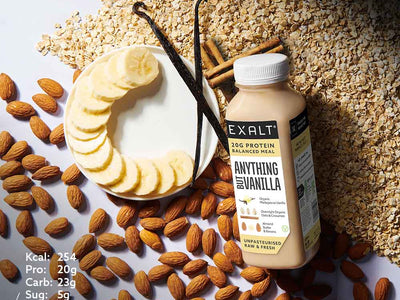Alex Cook, our resident sports & endurance dietitian/nutritionist gives her advice and top tips for getting back into training & exercise after a long break.
Covid has brought our fast-moving world to a standstill. After a year of uncertainty with many fitness goalposts being revised, moved or adapted, the countdown to the reopening of gyms has begun and from this week training groups can reform outside. An exciting time as it marks the beginning of the end of another 3 months lockdown in the UK, but for a lot, it probably also brings some anxiety…. and that’s ok, you’re not alone!
Based on an online survey, people who were highly active before COVID and those who used to exercise with friends or in sports clubs self-reported to exercise less in lockdown. Having less time, sitting more and missing the familiar and competitive elements of previous training was the main reason for a reduction (1). This period of time has been different for everyone and our levels of resilience are probably at an all-time low. So, now is the time to reset our wellbeing goals and being kind to ourselves in the process. Reduce the surrounding noise, shut out social media and don’t worry or compare what others are doing or achieving, ensure that you do you and focus on yourself and yourself alone.
Returning to Training After A Break: Expectations vs Reality
What we expect or hope to happen when we return to normal life and regular exercise routines is probably very different to the reality of what we are going to experience. It is important to remember that the closure of gyms, swimming pools or training groups has not only had an effect on us physically but also mentally.
The key is to start slow, steady and to be consistent. You will have had to move your goals multiple times in the last year, and although that long term goal such as a deadlift PB or running a marathon is still there, your short term goals leading up to it will be different. Gently progress week by week and focus on increasing volume, frequency and intensity at separate intervals. For example, after two weeks increase your weekly sessions from 2 to 3 but keeping the volume and intensity the same.
Once a routine has set in and you are exercising regularly, then you can start to consider increasing intensity and volume. It may seem hard to go slow but if you go back too fast you increase the risk of injury and also a dent in your confidence when your level of fitness is not what it was.
If you do happen to go back too quickly and you start getting niggles or fatigue then don’t worry. The body is very clever and gives us warning signs that we are overdoing it, the problem is so many of us choose to ignore, hope for the best and push on. Try and be more in tune with your body and please don’t put fatigue down to “weakness”. If you feel tired or start to niggle then take some time off. Better that way than pushing through and ending up taking weeks off rather than just days!
Positive Nutrition
Even when sticking to this “go slow” approach you still need to accept feelings of fatigue and soreness. So to help you on your way to greatness, extra focus needs to be given to how you fuel your body correctly. One thing you need to consider is avoiding your return to exercise alongside new dietary restrictions. We’ve missed out on a lot recently and so restricting and “not allowing “ ourselves foods we like may not be helpful. Thinking positively about your nutrition, adding things in and not taking things out is perhaps a good approach for the next few months. The focus should be on nourishment, recovery and positive nutrition steps. Try these steps in the first month to get your body fuelled and recovering well.
6 Tips For A Successful Return to Training
1. Add more wholegrain carbohydrate to help increase fibre. Start with your breakfast and choose wholemeal cereal and toast. At lunch and dinner try wholemeal rice, bagels, pasta and try different grains such as couscous and quinoa.
2. Add more fruit and vegetables to your day. This always sounds easy but for many hitting the basics of 5 a day is a challenge. Add fruit to breakfast and use it as snacks between meals. Always have half a plate of mixed salad or vegetables with your lunch and dinner. Challenge yourself to try something new each week.
3. Ensure you have protein at each meal and snacks. Protein is needed throughout the day not just after exercise. To make sure you are meeting your requirements (which will increase as you get back into a regular exercise routine) ensure a portion at each meal, for example, oats with high protein yoghurt & nuts, 2 eggs at lunch and a salmon fillet with dinner.
4. Focus on recovery after your exercise session. Recovery and adaptation to your training will be key to you progressing back to pre lockdown fitness. Don’t leave long periods of time between exercising and food. Post-exercise, have a balanced meal within an hour of finishing. If time between exercise and a meal is going to be longer, have a post-exercise snack that focuses on the 3 R’s; Rehydrate (fluid) Refuel (carbohydrate) Rebuild (protein).
5. If you want a sweet treat, have it after a meal. If you do have a sweet tooth and want some chocolate for example, have it after a meal rather than on its own in the middle of the afternoon. If eaten with a meal, the protein, fibre and fat content of the meal will slow the absorption of the sugar down having less of a drastic effect on blood sugar levels
6. Try dark chocolate instead of milk chocolate. A simple swap of milk to dark chocolate can be a positive move! Darker chocolate has many advantages, and one in particular is its high level of antioxidant flavonoids. Studies show these antioxidants can have multiple cardiovascular benefits primarily being anti-inflammatory, anti-thrombotic and vasodilatory, hence being good for your heart. A good tip to remember is the darker the chocolate (70% cocoa), the higher the flavonoid content and the better it is for you. Keep in mind though, the health benefits may disappear if you are eating over and beyond what is considered moderate! Research suggests 2 squares of high cocoa content chocolate a day is enough to provide you with the potential health benefits dark chocolate boasts.
Summary
The overall key message is to remember, small gains are better than no gains over the next few months! And most of all dig deep for a little bit more patience, as all things are difficult before they become easy!
Return to Training with EXALT
1. Add more wholegrain carbohydrate to help increase fibre.
All of the EXALT protein smoothies that contain fruit and oats are a source of fibre thanks to overnight oats and crammed full whole fruits.
2. Add more fruit and vegetables to your day.
EXALT juices & smoothies have at least 1 of your 5 a day
3. Ensure you have protein at each meal and snacks.
Between meals or after exercise, Exalt smoothies are high in protein to help you reach your daily requirement.
4. Focus on recovery after your exercise session
Lean Machine has a massive 40g per bottle. It is great used post-workout to restore muscles and keep DOMS at bay with added electrolytes . At 290Kcal per serving it is also an ideal option for those looking to manage their weight.
5. If you want a sweet treat, have it after a meal.
Health Nut is a great option for a healthy treat: low-sugar, high in vegan protein (22g) and surprisingly, only 289Kcal when it takes truly decadent.



